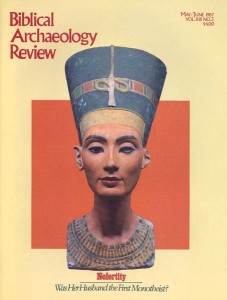Similarity Between Egyptian and Biblical Texts—Indirect Influence?
Sidebar to: The Monotheism of the Heretic Pharaoh
Psalm 104 in the Hebrew Psalter bears striking resemblance to the Hymn to the Sun-Disc which was carved in the tomb of the royal secretary and lieutenant-general of chariotry, Ay, in the necropolis at Akhetaten (also called Tell el-Amarna). Since Ay was a close associate of the king, and undoubtedly acted as his amanuensis, it has been assumed with good reason that the hymn was authored by Akhenaten himself. Certainly it embodies, as no other document does, the essence of the new religion, expressed powerfully and simply. Here we find the sun’s uniqueness and transcendence—its nature as a creator, and the earthly king’s filiation to the sun—described in beautiful poetry.
A comparison of the two texts reveals that Psalm 104 was clearly inspired by the Hymn to the Sun-Disc. (For the complete text of the Hymn see below) Because of this, some have suggested that at some time Moses must have come under the influence of Akhenaten’s “teaching”!
The parallels between the hymns are striking and must be taken seriously, although it is clear that Psalm 104 is not simply a translation of the Egyptian hymn.
Despite the parallels, however, there is no literary influence here, but rather a survival in the tradition of the themes of a magnificent poetic creation.
How can we account for the affinities between the two compositions? Surely they are not fortuitous.
Already a library member? Log in here.
Institution user? Log in with your IP address.

